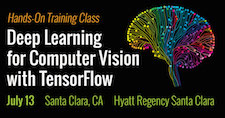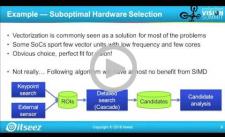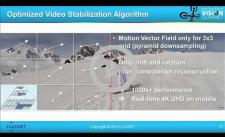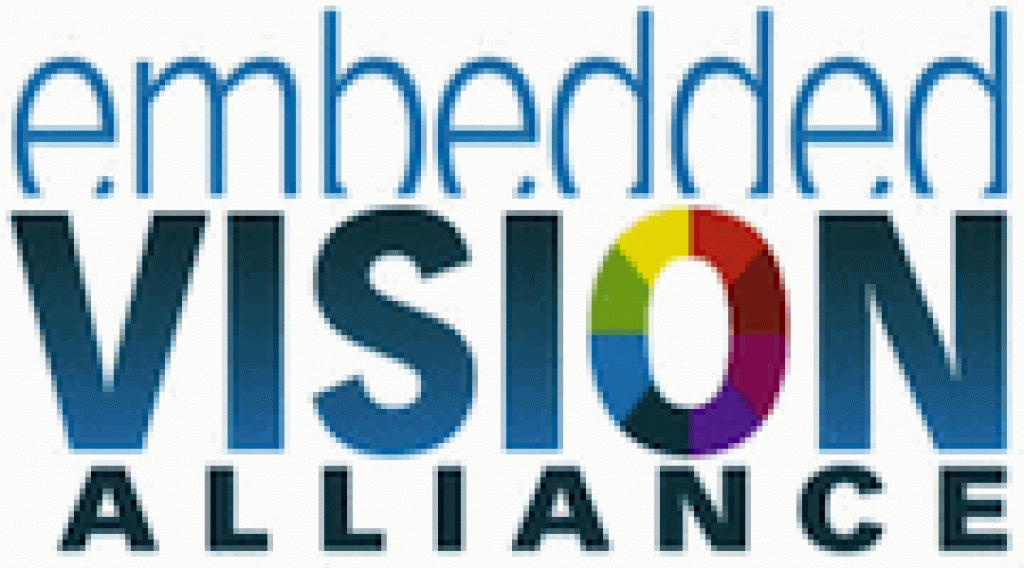|
Dear Colleague,
TensorFlow has become a popular framework for creating machine learning-based computer vision applications, especially for the development of deep neural networks. If you’re planning to develop computer vision applications using deep learning and want to understand how to use TensorFlow to do it, then don’t miss the Embedded Vision Alliance's full-day, hands-on training class in Santa Clara, California on July 13, 2017. Learn more and register at https://tensorflow.embedded-vision.com.
If Caffe is your deep learning framework of choice, check out tomorrow's (Wednesday, May 24, 10 am PT) free webinar, "Caffe to Zynq: State-of-the-Art Machine Learning Inference Performance in Less Than 5 Watts," delivered by Xilinx and organized by the Embedded Vision Alliance. It will present a method for easily migrating a CNN running in Caffe to an efficient Zynq-based embedded vision system utilizing Xilinx’s new reVISION software stack. To register, see the event page.
Brian Dipert
Editor-In-Chief, Embedded Vision Alliance
|
|
Making Existing Cars Smart Via Embedded Vision and Deep Learning
NAUTO is a system that consists of a device, network and app. It's an affordable way to upgrade any car to get network and safety features previously available only in high-end luxury cars. The NAUTO device is easy to install in any vehicle. It contains powerful video cameras and sensors that capture data inside and outside the car. It warns the driver of dangers in real time, and networks with other vehicles to provide traffic information by lane, a view of available street parking and warnings about road hazards. In this presentation, Stefan Heck, CEO and co-founder of NAUTO, explains how NAUTO is using deep learning, computer vision and embedded processors to bring sophisticated new capabilities to existing vehicles. Initial NAUTO deployments are already producing insights to help drivers and fleet operators save time, money and potentially lives. In addition, NAUTO is piloting technology with insurance industry partners that is designed to help mitigate risk, reduce accidents and improve efficiency.
How Deep Learning Is Enabling Computer Vision Markets
Deep learning has emerged as one of the most significant enabling technologies in the world of artificial intelligence (AI) and is beginning to be applied to a variety of business processes in industries ranging from healthcare to manufacturing to automotive, among others. As a key tool for automating and accelerating the analysis of large data sets generated by a proliferation of sensors and other connected devices, deep learning algorithms will find a home in a multitude of business and research applications. This presentation from Bruce Daley, Principal Analyst at Tractica, highlights the market factors, technology issues, use cases, and industry ecosystem that are developing around the use of deep learning for computer vision. Based on Tractica’s ongoing research and analysis, the presentation provides rich strategic insights as well as detailed quantification of the market opportunity in this burgeoning space.
|
|
Real-world Vision Systems Design: Challenges and Techniques
Computer vision is central to many modern, cool products and technologies, including augmented reality, virtual reality and drones. Thanks to recent advances in system-on-chip and embedded systems design, one can finally implement robust computer vision capabilities for demanding applications on embedded platforms. However, creating such systems is complex and challenging, and requires extensive, deep knowledge and hands-on experience in many areas, such as embedded system architecture, hardware-specific acceleration and memory access patterns. Mistakes in any of these areas can significant delay your project, or even sink it entirely. In this talk, Yury Gorbachev, Principal Engineer at Itseez (now part of Intel), explores some of the most common pitfalls of vision product development projects, and presents practical ways of avoiding them. He draws on examples from real-world product development projects.
Making Computer Vision Software Run Fast on Your Embedded Platform
Many computer vision algorithms perform well on desktop class systems, but struggle on resource constrained embedded platforms. This how-to talk from Alexey Rybakov, Senior Director at Luxoft, provides a comprehensive overview of various optimization methods that make vision software run fast on low power, small footprint hardware that is widely used in automotive, surveillance, and mobile devices. The presentation explores practical aspects of deep algorithm and software optimization such as thinning of input data, using dynamic regions of interest, mastering data pipelines and memory access, overcoming compiler inefficiencies, and more.
|
|
Xilinx Webinar Series – Caffe to Zynq: State-of-the-Art Machine Learning Inference Performance in Less Than 5 Watts: May 24, 2017, 10:00 am PT
Intel Webinar – Develop Smart Computer Vision Solutions Faster: June 14, 2017, 10:00 am PT
Sensors Expo & Conference: June 27-29, 2017, San Jose, California
Xilinx Webinar Series – OpenCV on Zynq: Accelerating 4k60 Dense Optical Flow and Stereo Vision: July 12, 2017, 10:00 am PT
TensorFlow Training Class: July 13, 2017, Santa Clara, California
TensorFlow Training Class: September 7, 2017, Hamburg, Germany
More Events
|







